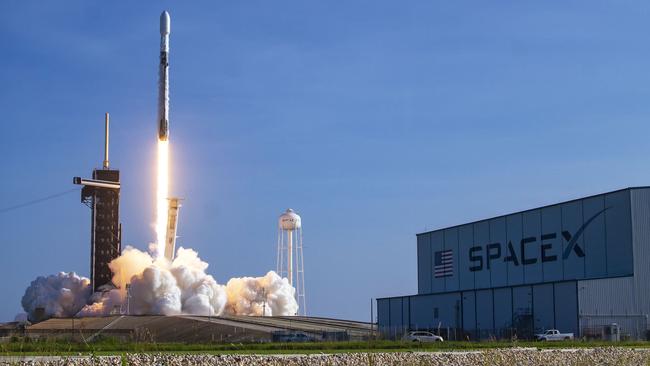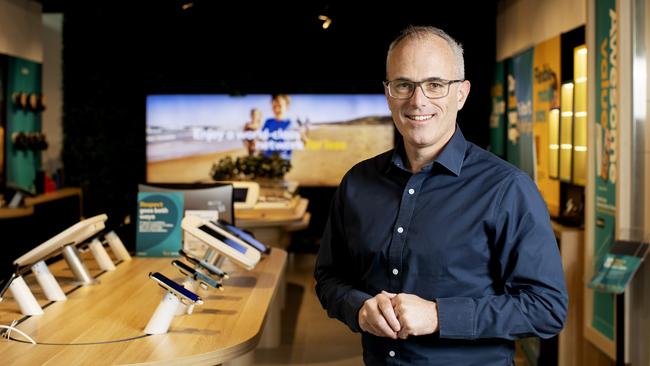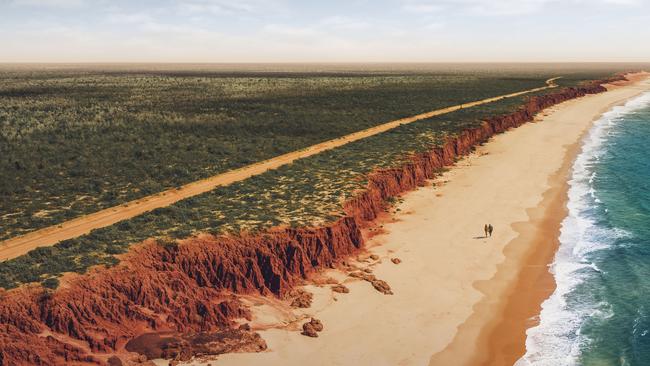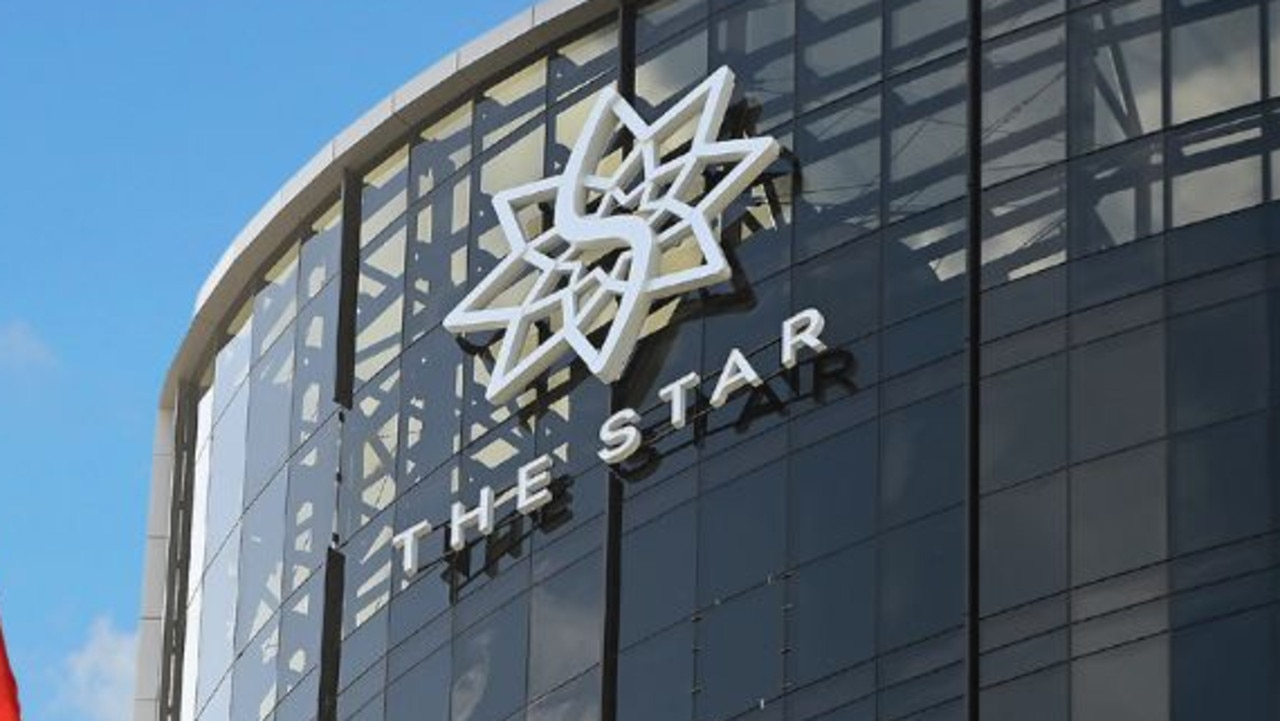Optus-SpaceX deal to deliver mobile coverage anywhere in Australia on your standard phone
The nation’s second largest telco has reached a deal which will connect its users’ standard mobile phones directly to satellites giving 100 per cent coverage across Australia.

Business
Don't miss out on the headlines from Business. Followed categories will be added to My News.
Optus is about to become the first telco in Australia to offer direct-to-handset communications via satellites, under a new deal with Elon Musk’s SpaceX in which it plans to provide 100 per cent land coverage.
The deal, due to be announced late on Wednesday, will allow Optus customers to send text messages via satellites by December 2024, while voice and data will be available in December 2025.
The announcement arrives just over one week after Telstra announced a partnership with SpaceX’s Starlink, which would allow customers to utilise the company’s satellite constellation via specific hardware to provide data services across the country. The deal would also include a voice option via special modems.
The Optus deal is significantly different and will involve SpaceX launching hundreds of new satellites with LTE capability before the end of this year.
The new satellites would be able to connect to any 4G-compatible device without any further manipulation of existing antennas. Mobiles, laptops and wearables such as smart watches would be able to connect to the service, Optus managing director of revenue and marketing Matt Williams said.
“What’s really important about this is that it’s not using any special devices and doesn’t require a new satellite phone; it doesn’t require any particular software, it’s just using your standard mobile phone that is in your pocket right now,” he said.
Mr Williams told The Australian on Wednesday that Optus was working to set up seamless network integration which would allow customers to move from mobile towers to satellites as they travel.

“When you’re in the sort of metro areas you will have to use our 4G and 5G network and then when you move out of that coverage area and you get out to the bush or to the outback, you will then seamlessly switch across to the SpaceX satellites,” he said.
While most telcos claim coverage rates in the high 90s – Telstra claims 99.6 per cent, Optus claims 98.5 per cent and TPG claims 96 per cent for 3G and 95 per cent for 4G – those figures represent population coverage. About two thirds of Australia geographically does not have mobile coverage.
The Optus satellite service, while providing 100 per cent land coverage, would require a user to be outside with a direct line of sight to the sky, Mr Williams said. Optus is yet to run a trial of devices connecting to the satellites but plans to later this year as the satellites are deployed.
SpaceX senior director of satellite engineering Sara Spangelo, speaking to The Australian from California on Wednesday, said that it would need fewer than 1000 new satellites in operation for the text service.

“We’ll start with hundreds of satellites and we’ll be able to kick off a text-based service with that and then thousands of satellites eventually as we roll out our voice and data specifically for direct to cell,” she said.
SpaceX has chosen to launch its SMS service ahead of data and voice because of wait times, Ms Spangelo said.
“The reason that we’re starting with that is that texting is latency tolerant. You can wait a few minutes or even a few seconds while your text goes through, whereas voice really requires continuous coverage,” she said.
Asked whether SpaceX would replace its current satellites for the Starlink data service with LTE-capable satellites when they reach the end of their five-year lifespan, Ms Spangelo said it was likely. SpaceX is launching satellites at a rate of 50 every four days, she said.
While Optus is the first telco to establish a deal in Australia, the SpaceX satellites have capacity to provide services to multiple carriers, Ms Spangelo said.
“We’re open to partnering with everyone. We’ve actually announced five deals specifically for the direct to mobile program,” she said.
Ms Spangelo said the company was currently looking to expand the lifespan of new satellites, with plans to double their lifespan to 10 years.
“In our minds, all of these satellites are going up to provide additional capacity to customers that want it, whether it’s for broadband or for the direct to mobile services. We’re not planning to decommission any satellites as a result of this,” she said.
Mr Williams said Optus was still working out whether connectivity from compatible devices to the new satellite network would be any different to connecting to a tower.
“The expectation is that it should have a very similar sort of performance and characteristics as we see today with 4G networks,” he said.
Originally published as Optus-SpaceX deal to deliver mobile coverage anywhere in Australia on your standard phone





